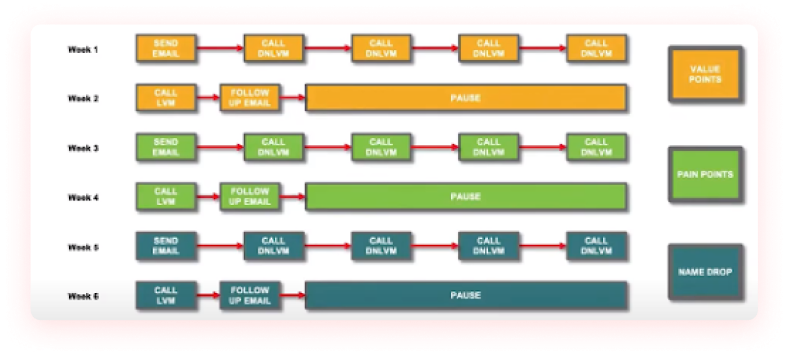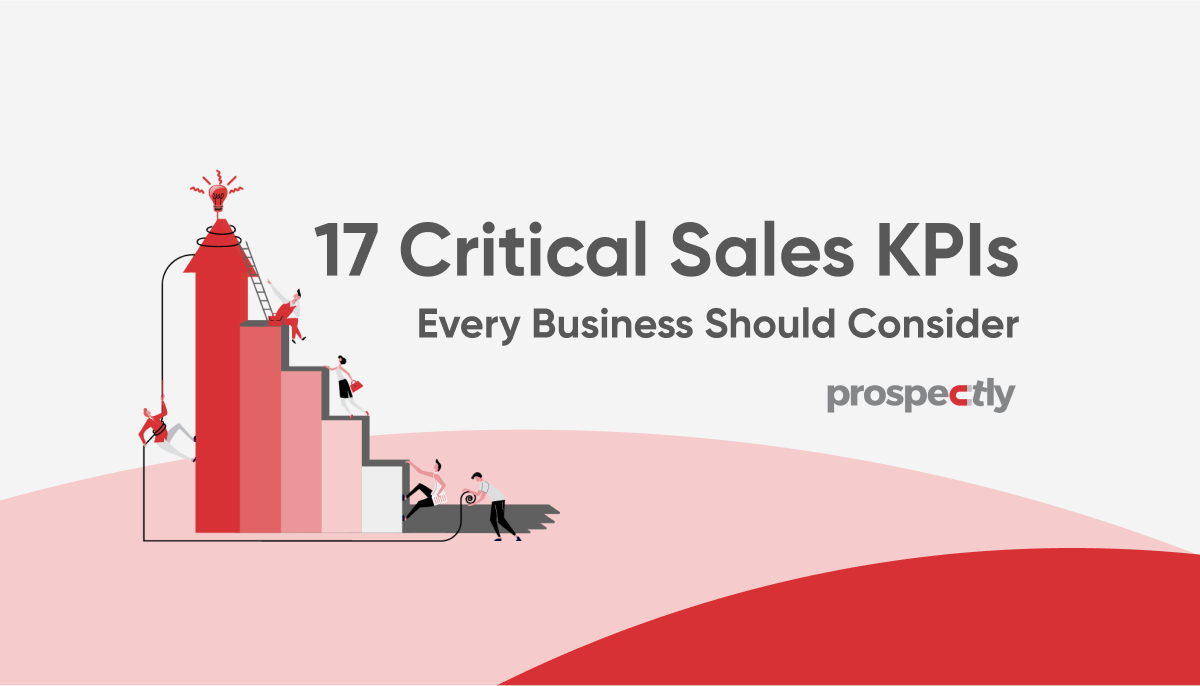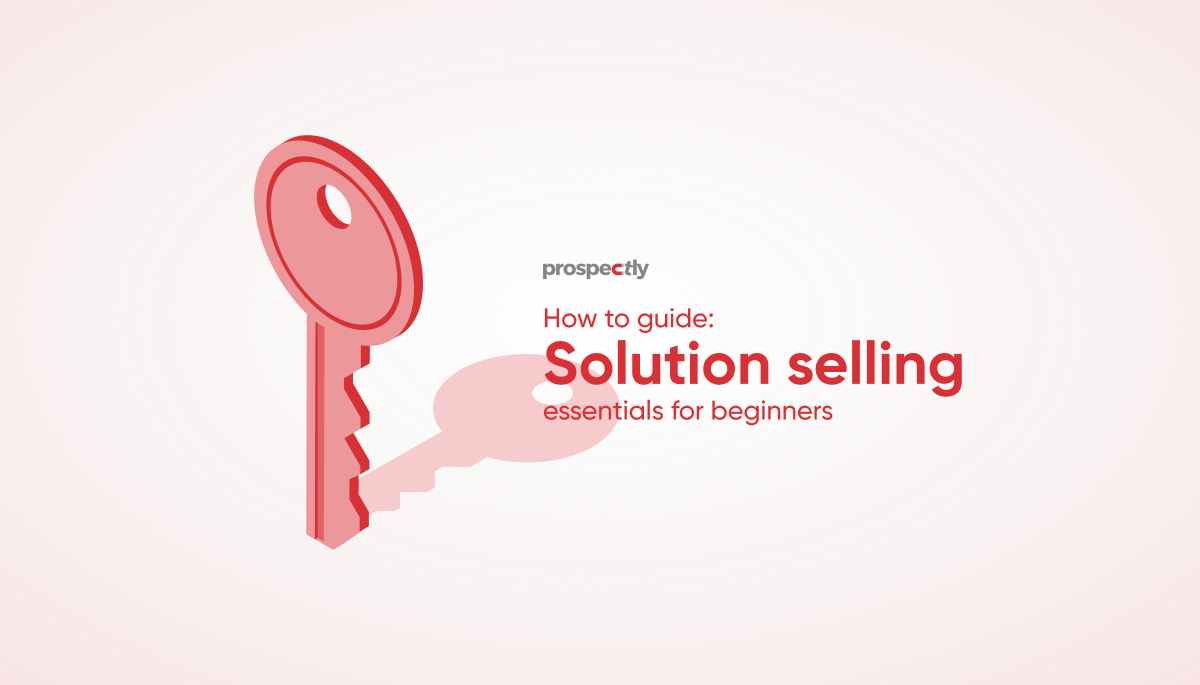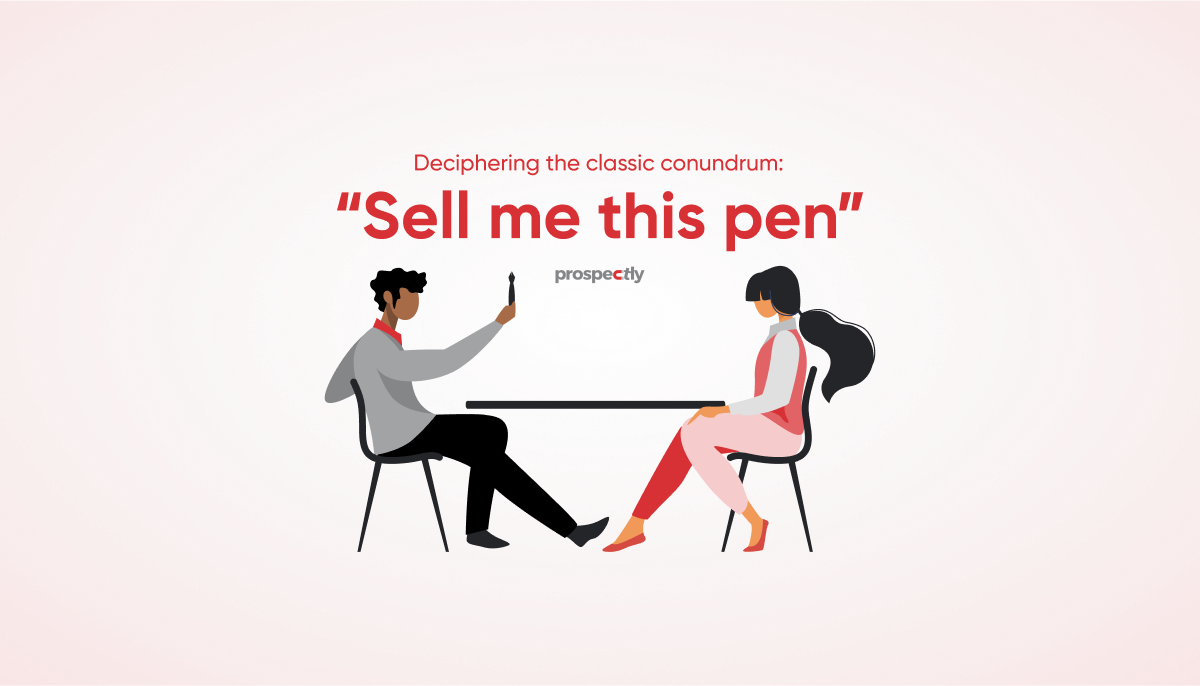Sales cadence: How to create the best cadence that lands meetings
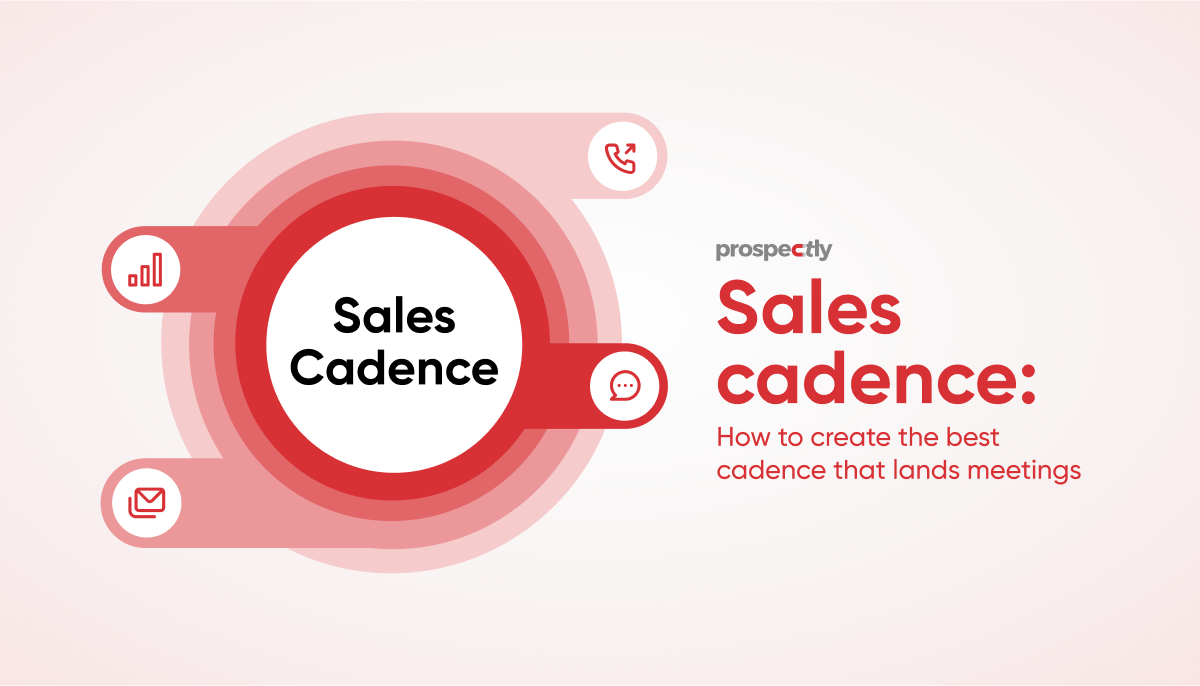
How many times must your sales reps call their prospects? How often can they send emails? What are the best times to build relationships with potential customers? A sales cadence in outbound prospecting is the answer to these questions. In this guide, you’ll learn various sales cadences that you can tweak to suit your industry and customer profiles.
Read on…
What is sales cadence?
Sales cadence is a smooth flow of touchpoints leading to an engagement with your potential buyer or prospect. The primary goal of any cadence is to turn an online conversation into an offline conversation.
Or you may picture cadence as several steps you take to engage your sales leads. It may include emailing, phoning, and connecting with your prospect on social media.
Your prospecting cadence answers the following questions.
- How many emails should you send?
- How many times should you call?
- How many voicemails should you leave?
A sales cadence shows the flow of your call attempts and varied ways to reach out to your prospect. Your goal is to win that meeting with your prospect to establish a win-win relationship that’ll lead to a sale. For this to happen, your cadence should follow a systematic framework.
However, does a sales cadence matter for your sales reps?
Why does sales cadence matter for your sales reps?
Several studies by marketing experts say that sales reps abandon their sales prospecting too early. Maybe one of the reasons is a lack of understanding of why they need a connecting system with their prospects.
“92% of sales pros give up after the 4th call, but 80% of prospects say no four times before they say yes,” (MarketingDonut) via Zety.com.
Here’s the thing.
As a sales manager, you can benefit from a straightforward sales process. Cadence helps your sales reps and business in many ways.
- You can reach out to sales leads across many channels & test which ones bear fruit.
- It lets you engage with your prospect multiple times to have an insiders’ knowledge of their interests.
- Sales reps can follow up on every prospect entered in your CRM based on a sequence.
- It makes your sales team consistent and their work predictable. There’s no guesswork.
- Your outbound sales strategy becomes easy to roll into action with a sales cadence. It improves your sales engagement.
- You can measure your sales team’s performance with ease. Sales cadence can be your primary metric.
The next super exciting part is building a successful sales cadence. Check out the rhythm below and catch the melody.
7 ways of building a sales cadence that works
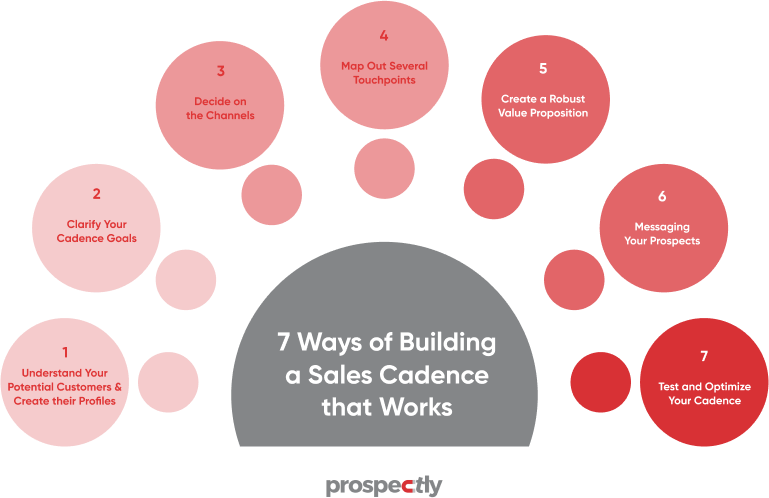
- Understand your potential customers & create their profiles
Understanding your prospect is vital for your success. Art Sobczak, keynote speaker, sales trainer, and author of Smart Calling, says:
“Smart Calling is simply knowing something about the individuals, the companies, and the situations that we’re calling into… People today are inundated with thousands of messages every day, and therefore they have to become professional ignorers.”
In a nutshell, you need a clear idea of who your customers are, their buyer persona, and industry.
To get you started with your customer profiles, consider the features below.
The target company’s industry:
– Company size: large enterprise (250+ employees); medium-sized enterprises (50-249); small enterprise (10-49) & micro-enterprises (1-9)
– Company’s revenue/profit
– Number of employees
– Company location and time zone
– Company’s department with potential to use your product/ service
– Challenges the company is trying to fix
– Current company’s solutions for their problem(s)
– Let’s admit that building individual personas of hundreds of prospects could be an uphill task. A shortcut to this is batching your research and studying your potential customers as a whole.
– Gather similar info about each of your sales prospects. Next, you tabulate the details according to their standard features. The last step is crafting your emails based on the prospect’s characteristics.
– Say you kick off your research with five prospects. Look for the same details about each potential customer, maybe ten features. Use the info on buyer personas to help with this process.
– Go ahead and create a spreadsheet to have a clear view of your sales prospects.
Here’s an example of batching your research.
You can personalize email templates for several likely customers with this summarized info. Continue reading to get inspiration from email templates at the end of the blog.
- Clarify your cadence goals
The first step of creating customer profiles can be successful if your sales cadence goals are clear from the beginning. You might be aware of the SMART principle in creating your objectives and follow it when you make your goals.
Let your goals be clear and specific. Are you looking to present a demo? Or will you offer a free trial or ask your prospect to complete a survey?
Answers to these questions and others will give you a solid footing in your sales cadence strategy.
- Decide on the channels
At this stage, you’ve compiled your sales prospects list. Also, you know who to contact. Your next task is figuring out the best and effective communication channels. The most common ones are emails, voice mails, phone calls, text messages, and social media.
Note that you should use a multichannel approach to have a balanced cadence. It also boosts your chances of receiving positive responses.
Also, the time of reaching out to your prospects in your outbound sales cadence is crucial. That’s because your goal is to grab your potential customer’s attention.
Think about the days and times they’re available to respond to your messages. Check out the times below.
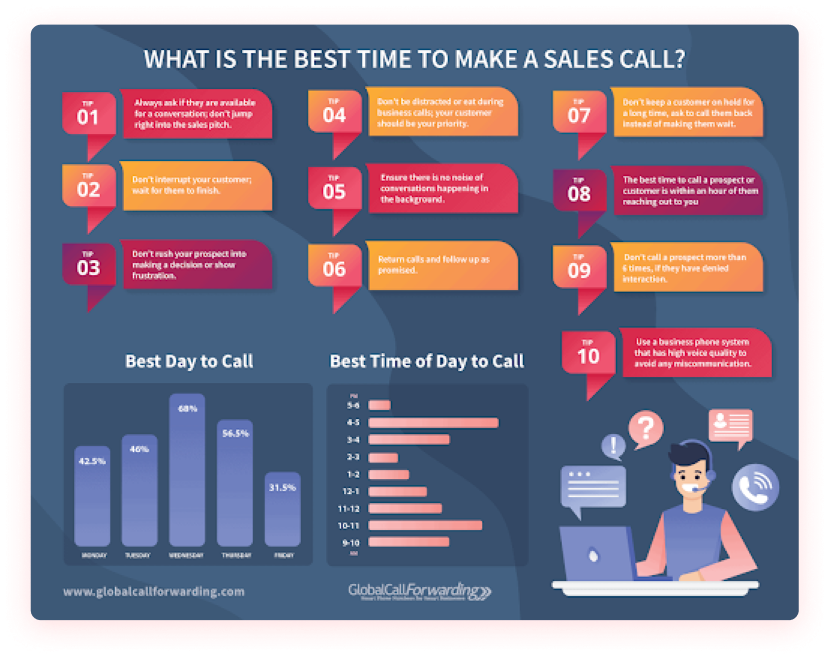
Tuesday, Wednesday, and Thursday are the best days to call. Your sales call should be between 4-5 pm in the prospect’s local time. Other times like 10-11 am can do, too.
- Map out several touchpoints
It’s important to remember that one phone call or an email may not yield the results you want in sales prospecting. Giving up too early because of non-responsive prospects isn’t the solution.
You should have several touchpoints to have a consistent sales cadence. For your sales process to be meaningful, 8 to 12 touchpoints are the way to go. You’ll need several tries before a prospect warms up to your messaging.
Tim Conkle, CEO of The 20, recommends between 10-12 touches for initiating meaningful conversations in B2B sales. But managed services may need 14-18 touches.
A sales cadence may stretch for two to four weeks. As you create your sales cadence, decide on the minimum touchpoints. And then stick to your method for consistent results.
- Create a robust value proposition
Your prospects can only opt for your product or service if they see value in your proposition. It has to speak the language of your target audience and solve their pressing needs.
To understand if your product is the perfect fit for your potential customer, try testing it with your current customer. They must have similar features to your prospect for this experiment to work.
Find out the positive and constructive things about your product. Of course, you need to focus on what makes your existing customers like what you offer.
A survey can be handy in this situation. After the study, jot down all the best product features that solve your buyers’ problems.
Consider measurable aspects like productivity, sales, and other specific outcomes. How well has your product helped your customers improve in these areas? Your answers will become your selling points to your prospects.
A value proposition of a product or service might look like this. The quotes are from Technologyadvice.com.
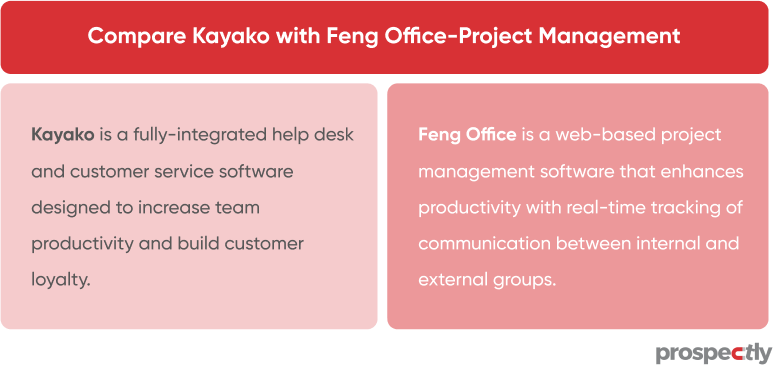
Each productivity software has its unique name, and it also spells out what the tool does and how customers can benefit from it. Your value proposition should highlight how your product can improve people’s lives.
- Messaging your prospects
How you craft a message is also essential. Your goal is to boost your prospects’ chances of getting positive feedback.
Here are some vital considerations to include in your copy.
- Personalize the subject line by including the company’s or prospect’s name
- Personalize the email’s body by highlighting the prospect’s pain points and present needs
- Reasons for contacting them
- Your specific help; what you’re offering to fix their problem
- How the prospect will benefit from your business relationship
- Other companies that find your product helpful
Check out below a cold email template for B2B sales from Snov.io.com based on the AIDA principle. You can tweak it to suit your situation.
Headline: Save Time. Get Leads
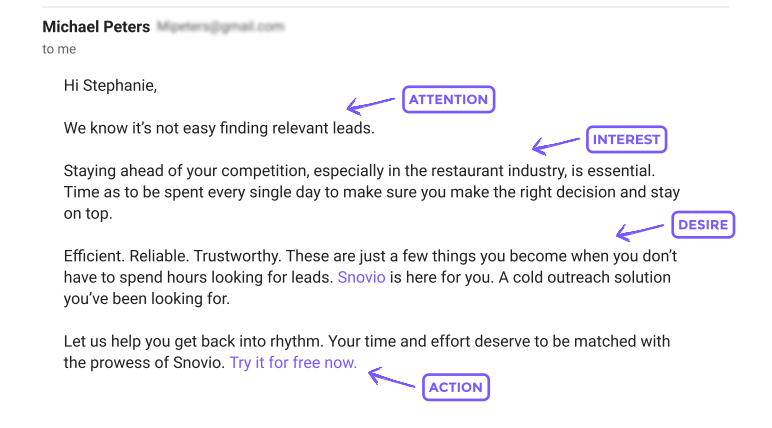
The email is brief to the point and has a high chance of being read.
Jess Pingrey, a sales expert and a contributor to Fitsmallbusiness.com, shares two examples below of cold calling scripts.
Example 1: Setting up an appointment with a prospect
Hi ____________, this is____________ from [your organization name]. We haven’t had a chance to talk directly yet, but I saw that your company is one of the top providers of [specific product/service your prospect offers], and I wanted to quickly share ways we’ve
helped other businesses similar to yours. Is this an OK time to chat for a few minutes?
[Client agrees to chat]
Excellent. So we are a [product/service] business that specializes in [market niche or specific solutions], which is why I wanted to reach out to you directly. Our [product/service attribute] solution allows you to [benefit of using product/service].
I’d love to show you more with a 15-minute [demo or presentation]. Are you free early next week so I can show you the [features or services] that may help you reach your goals?
- Scenario 1: [Prospect agrees]
Great, if I can get your email address, I will send you an invite to my calendar portal so you can pick a time that works for you.
- Scenario 2: [Prospect rejects]
OK, no worries. I can email you some additional information for reference, so if you find you need our services later, you’ll have it and my contact information. What’s a good email address for you?
Example 2: Qualifying a lead to see if prospects are worth pursuing
The template is perfect for lead generation.
Hi ____________, this is____________ from [your organization name]. I was hoping to make a brief introduction and learn a little more about your business. Is this an OK time to talk?
[Client agrees to chat]
Awesome. I know you are busy, so I will keep this brief. We are a [product/service] business that focuses on [market niche or specific solutions], which allows our clients to [benefit from using product/service].
Do mind sharing which [product/service] provider you are currently using?
[Prospect answers]
Great. And is there anything in particular you dislike or would like to improve about using [prospect’s current provider]?
[Prospect answers]
Terrific. And how about some aspects you like most about using [prospect’s current provider]?
[Prospect answers]
Excellent. So I think we could be a good fit based on some of the [product/service] attributes you want to prioritize. I’d love to continue this conversation with a 15-minute [demo or presentation] so I can show you how the [product/service attributes] can [how attributes can help with what they like about the current provider], as well as how the [product/service attributes] can help you [how attributes can help with what they dislike about current provider].
Is this something we can get scheduled for next week?
- Test and Optimize Your Cadence
Why is this step also crucial? No cadence is one-size-fits-all, and businesses, industries, and situations vary. As a result, one sales cadence may produce the desired outcomes in a different environment. Or it might not work at all.
By checking your open and click rates, you can tell if your emails are effective. Lower response rates mean that your sales cadence needs tweaking. Perhaps, adding testimonials or case studies can add more credibility to your claims.
You may also notice that phone calls at lunchtime are workable. The issue here is testing and optimizing your sales cadence to give you the expected results.
Use these metrics below to measure and adjust your sales cadence.
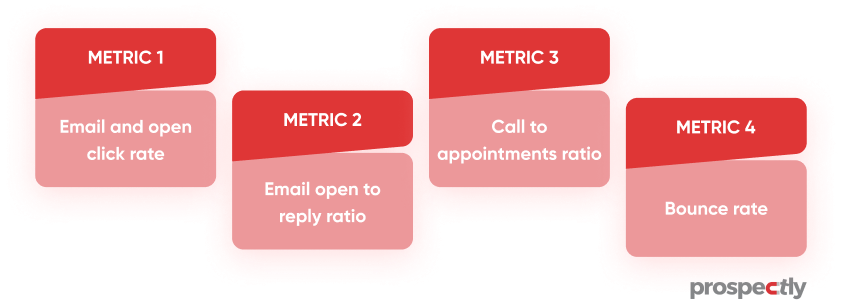
Email and open click rate: Have your prospects opened your emails or clicked your attachments?
Email open to reply ratio: A good reply rate shows that your prospects find your content relevant.
Call to appointments ratio: The metric lets you know if you’re reaching out to the right audience, what industries, markets, and geographies you should concentrate on.
Bounce rate: The higher the bounce rate, the more you need to analyze your email list to remove uninterested prospects.
In summary, the critical elements of your sales cadence include:
- Timing
- Channel
- Phone calls
- Social media
Here’s another juicy part. Below is a list of examples of sales cadence.
Let’s dive in.
Six sales cadence examples
Another issue that can break or make your sales cadence is the time gap between your touchpoints. You wouldn’t want to receive endless messages if you were a prospect.
In the same way, your prospect may be annoyed or put off by the never-ending calls or emails. It’s wiser to space out your touchpoints to give them a breather to digest the info you sent them.
Doing between 8-10 touches over a month is advisable. Also, some sales reps allow for two days between each outreach. Or you can do 1-2 contacts a week as you wrap up your sales cadence.
The principle here is to separate your touchpoints in your outreach.
Example 1
Day 1: Emails 1 and 2
Day 2: Email 3
Day 3: Call 1, Voice Mail 1
Day 4: Social Media 1, Email 4
Day 5: Call 2, Email 5, Social Media 2
Creator: InsideSales.com’s customers, now called XANT™
Example 2
Day 1: Email/InMail
Day 3: Email in the morning, Call in the afternoon
Day 5: Call in the morning, Call with a voicemail in the afternoon
Day 7: Email in the morning, Call in the afternoon with a voicemail
Day 10: Email and call in the morning
Creator: Sales Hub CEO Max Altschuler
Example 3
Day 1: Email 1
Day 2: Call 1, Voice mail 1, Email 2
Day 7: Call 2, Voice mail 2, Email 3
Day 14: Call 3, Voice mail 3, Email 4
Day 21: Call 4, Voice mail 4, Email 5
Day 35: Call 5, Voice mail 5, Email 6
Day 49: Call 6, Voice mail 6, Email 7
Day 63: Call 7, Voice mail 7, Email 8
Day 77: Call 8, Voice mail 8, Email 9
Creator: InsideSales.com’s clients, now called XANT™
Example 4
Day 1: Prospect Research
Day 2: InMail
Day 3: Follow-up InMail
Day 4: Email
Day 5: Follow-up Email
Day 6: Phone
Day 7: Social Media (share an article and tag the prospect)
Day 8: Video Email
Day 9: Social Media (engage prospect on LinkedIn)
Day 10: Voice Mail
Day 11: Email
Day 12: Phone or Email
Creator: Carlos Montero, CEO at digital marketing consulting firm Biassa
Example 5
Trent Diamond @sales_nuggests on Twitter has a different cadence.
https://publish.twitter.com/?query=https%3A%2F%2Ftwitter.com%2Fsales_nuggets%2Fstatus%2F1455681131408416771&widget=Tweet
You might have noticed that the cadences are different. That’s because various industries and companies call for varied approaches. What’s critical is testing and optimizing until you get what satisfies your prospects.
Remember that a sales cadence can be either two or four weeks long or even more like this one below.
Example 6
In the first week, you send an email and make multiple calls without leaving a voice mail message.
Week 2: Call, send an email follow-up, and then pause. Include value propositions in your messages.
Week 3. Repeat week 1, but include the prospect’s pain points/
Week 4: Repeat week 2; also include pain points.
Week 5: Repeat week 3, including name dropping; people you could be working with within your company.
Week 6. Repeat week 4
Week 7: Repeat week 5, but talk about your product/service.
Week 8: Repeat week 6. Emphasize how your product can help the prospect.
Some sales experts suggest including a 30-second video welcoming your prospects after sending several emails.
What do you think?
The biggest takeaway is that a sales cadence injects consistency into your sales prospecting. Also, you supercharge your chances of getting positive responses from your prospects.
However, see your outbound sales cadence as a process that needs adjusting to match your potential customer’s needs. Blending your sales process with market automation also improves your outreach.
Tell us what your cadence is like in the comments below. We’d love to hear from you.

